Andy Lo
Voxtral
Jul 17, 2025Abstract:We present Voxtral Mini and Voxtral Small, two multimodal audio chat models. Voxtral is trained to comprehend both spoken audio and text documents, achieving state-of-the-art performance across a diverse range of audio benchmarks, while preserving strong text capabilities. Voxtral Small outperforms a number of closed-source models, while being small enough to run locally. A 32K context window enables the model to handle audio files up to 40 minutes in duration and long multi-turn conversations. We also contribute three benchmarks for evaluating speech understanding models on knowledge and trivia. Both Voxtral models are released under Apache 2.0 license.
Magistral
Jun 12, 2025Abstract:We introduce Magistral, Mistral's first reasoning model and our own scalable reinforcement learning (RL) pipeline. Instead of relying on existing implementations and RL traces distilled from prior models, we follow a ground up approach, relying solely on our own models and infrastructure. Notably, we demonstrate a stack that enabled us to explore the limits of pure RL training of LLMs, present a simple method to force the reasoning language of the model, and show that RL on text data alone maintains most of the initial checkpoint's capabilities. We find that RL on text maintains or improves multimodal understanding, instruction following and function calling. We present Magistral Medium, trained for reasoning on top of Mistral Medium 3 with RL alone, and we open-source Magistral Small (Apache 2.0) which further includes cold-start data from Magistral Medium.
Efficient Sparse Training with Structured Dropout
Nov 02, 2024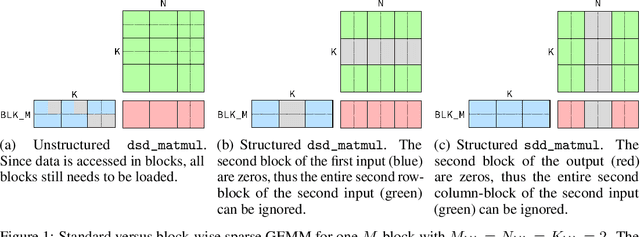
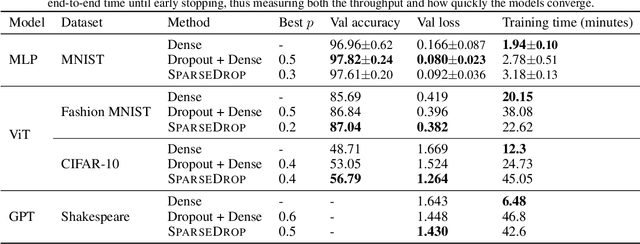


Abstract:Dropout is a common regularisation technique in deep learning that improves generalisation. Even though it introduces sparsity and thus potential for higher throughput, it usually cannot bring speed-ups on GPUs due to its unstructured nature. In this project, I experiment with SparseDrop, a structured, hardware-friendly variant of dropout that can exploit such sparsity. I provide a CUDA implementation of SparseDrop, achieving speed-ups against its dense counterpart even at low sparsity levels. The empirical results demonstrate that SparseDrop provides similar, or sometimes even better, regularisation properties as standard dropout. This suggests its potential as a drop-in replacement to standard dropout with faster training speeds. The source code is available at https://github.com/andylolu2/sparse-dropout
End-to-End Ontology Learning with Large Language Models
Oct 31, 2024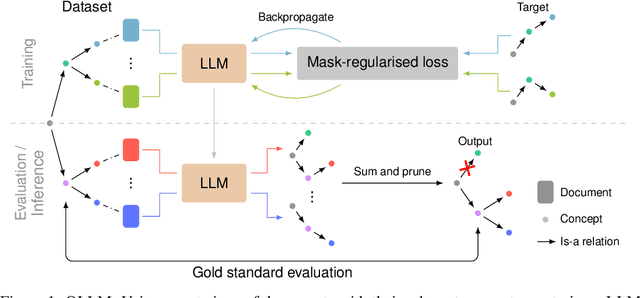
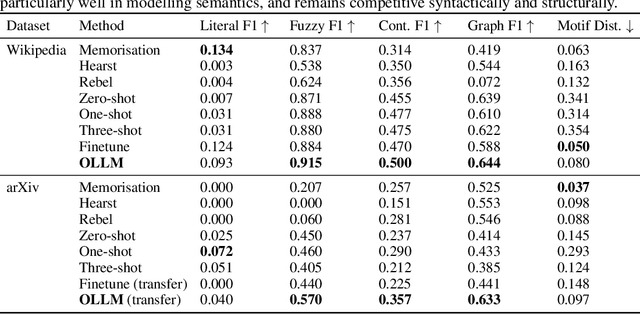
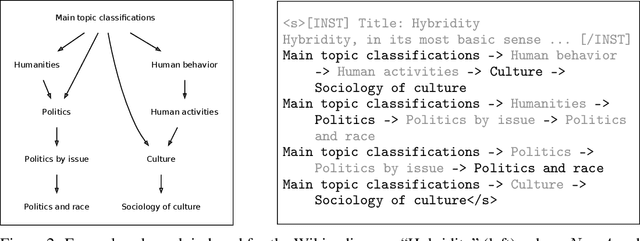
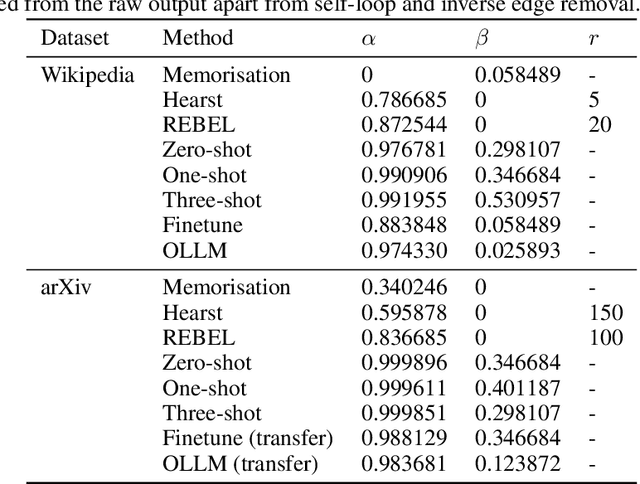
Abstract:Ontologies are useful for automatic machine processing of domain knowledge as they represent it in a structured format. Yet, constructing ontologies requires substantial manual effort. To automate part of this process, large language models (LLMs) have been applied to solve various subtasks of ontology learning. However, this partial ontology learning does not capture the interactions between subtasks. We address this gap by introducing OLLM, a general and scalable method for building the taxonomic backbone of an ontology from scratch. Rather than focusing on subtasks, like individual relations between entities, we model entire subcomponents of the target ontology by finetuning an LLM with a custom regulariser that reduces overfitting on high-frequency concepts. We introduce a novel suite of metrics for evaluating the quality of the generated ontology by measuring its semantic and structural similarity to the ground truth. In contrast to standard metrics, our metrics use deep learning techniques to define more robust distance measures between graphs. Both our quantitative and qualitative results on Wikipedia show that OLLM outperforms subtask composition methods, producing more semantically accurate ontologies while maintaining structural integrity. We further demonstrate that our model can be effectively adapted to new domains, like arXiv, needing only a small number of training examples. Our source code and datasets are available at https://github.com/andylolu2/ollm.
Pixtral 12B
Oct 09, 2024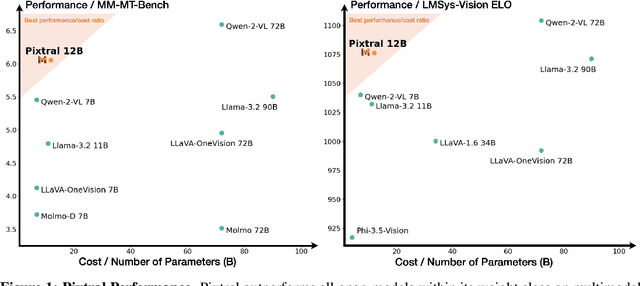
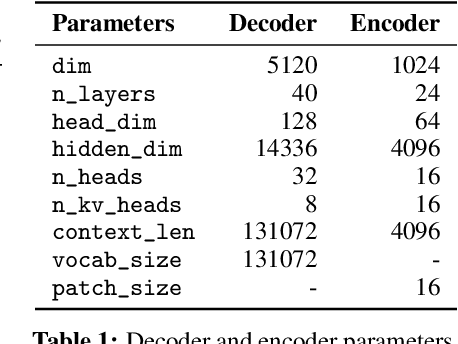
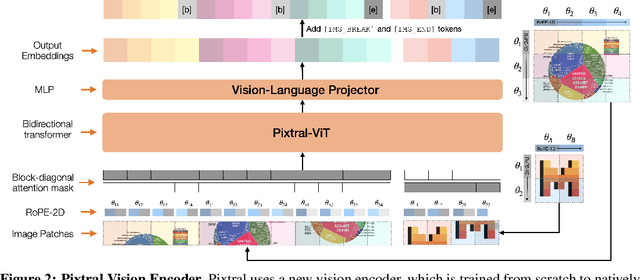
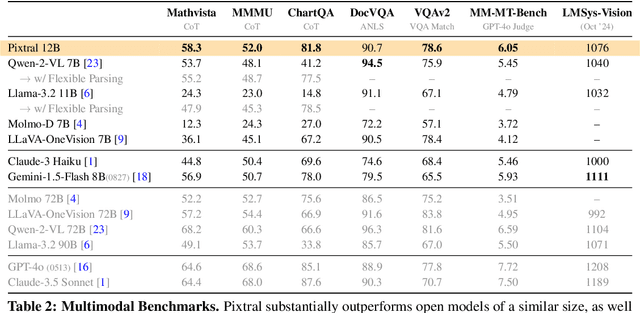
Abstract:We introduce Pixtral-12B, a 12--billion-parameter multimodal language model. Pixtral-12B is trained to understand both natural images and documents, achieving leading performance on various multimodal benchmarks, surpassing a number of larger models. Unlike many open-source models, Pixtral is also a cutting-edge text model for its size, and does not compromise on natural language performance to excel in multimodal tasks. Pixtral uses a new vision encoder trained from scratch, which allows it to ingest images at their natural resolution and aspect ratio. This gives users flexibility on the number of tokens used to process an image. Pixtral is also able to process any number of images in its long context window of 128K tokens. Pixtral 12B substanially outperforms other open models of similar sizes (Llama-3.2 11B \& Qwen-2-VL 7B). It also outperforms much larger open models like Llama-3.2 90B while being 7x smaller. We further contribute an open-source benchmark, MM-MT-Bench, for evaluating vision-language models in practical scenarios, and provide detailed analysis and code for standardized evaluation protocols for multimodal LLMs. Pixtral-12B is released under Apache 2.0 license.
 Add to Chrome
Add to Chrome Add to Firefox
Add to Firefox Add to Edge
Add to Edge